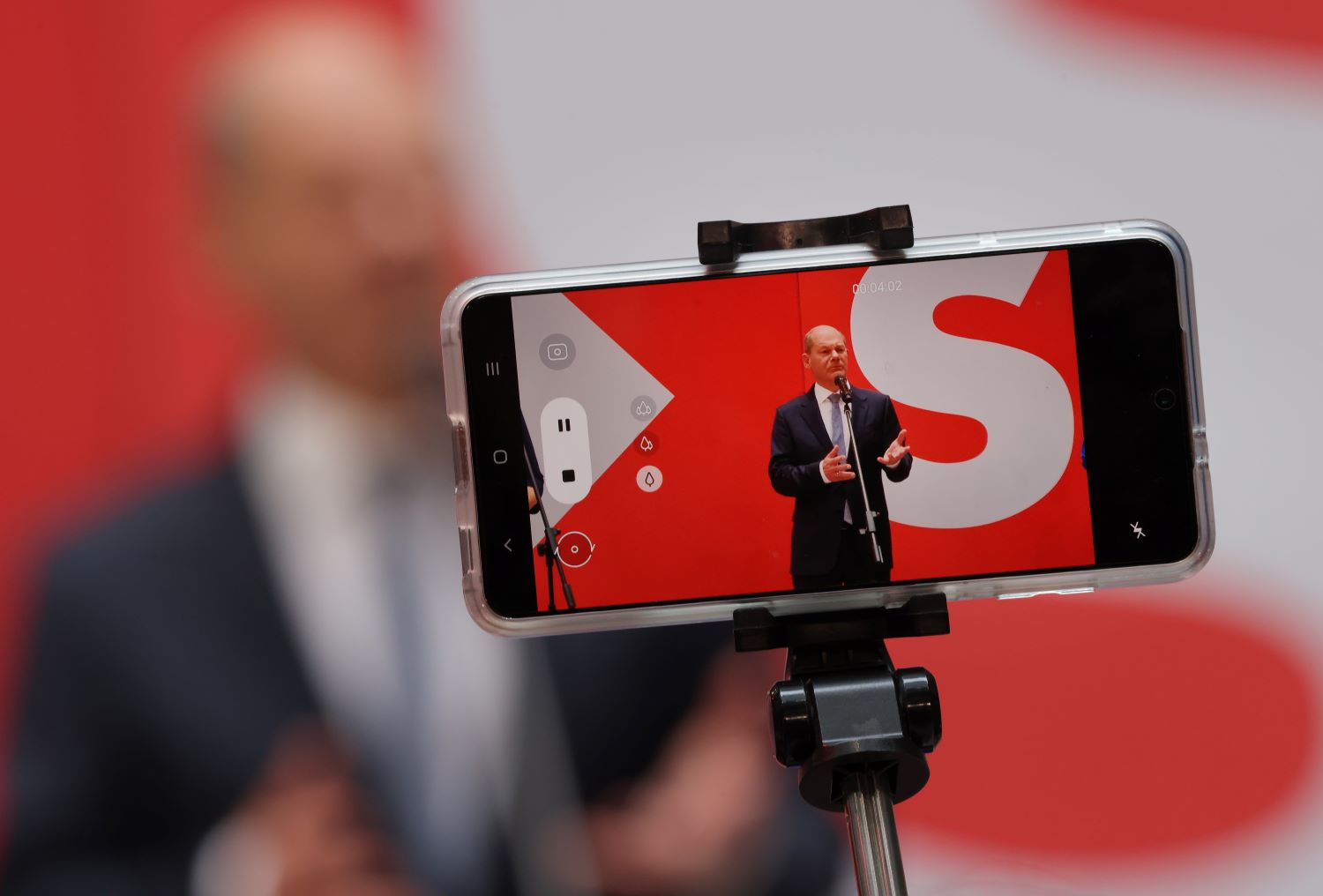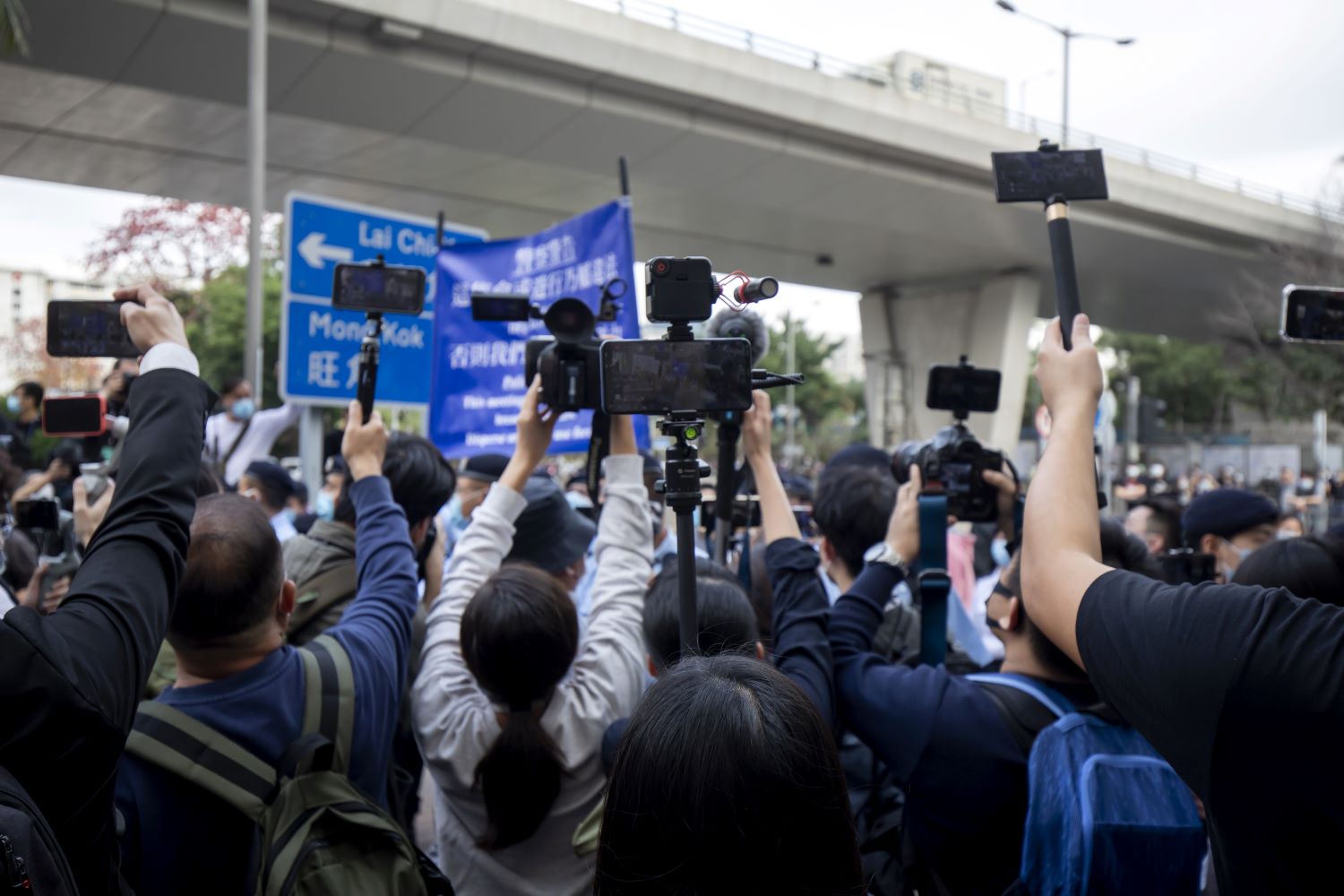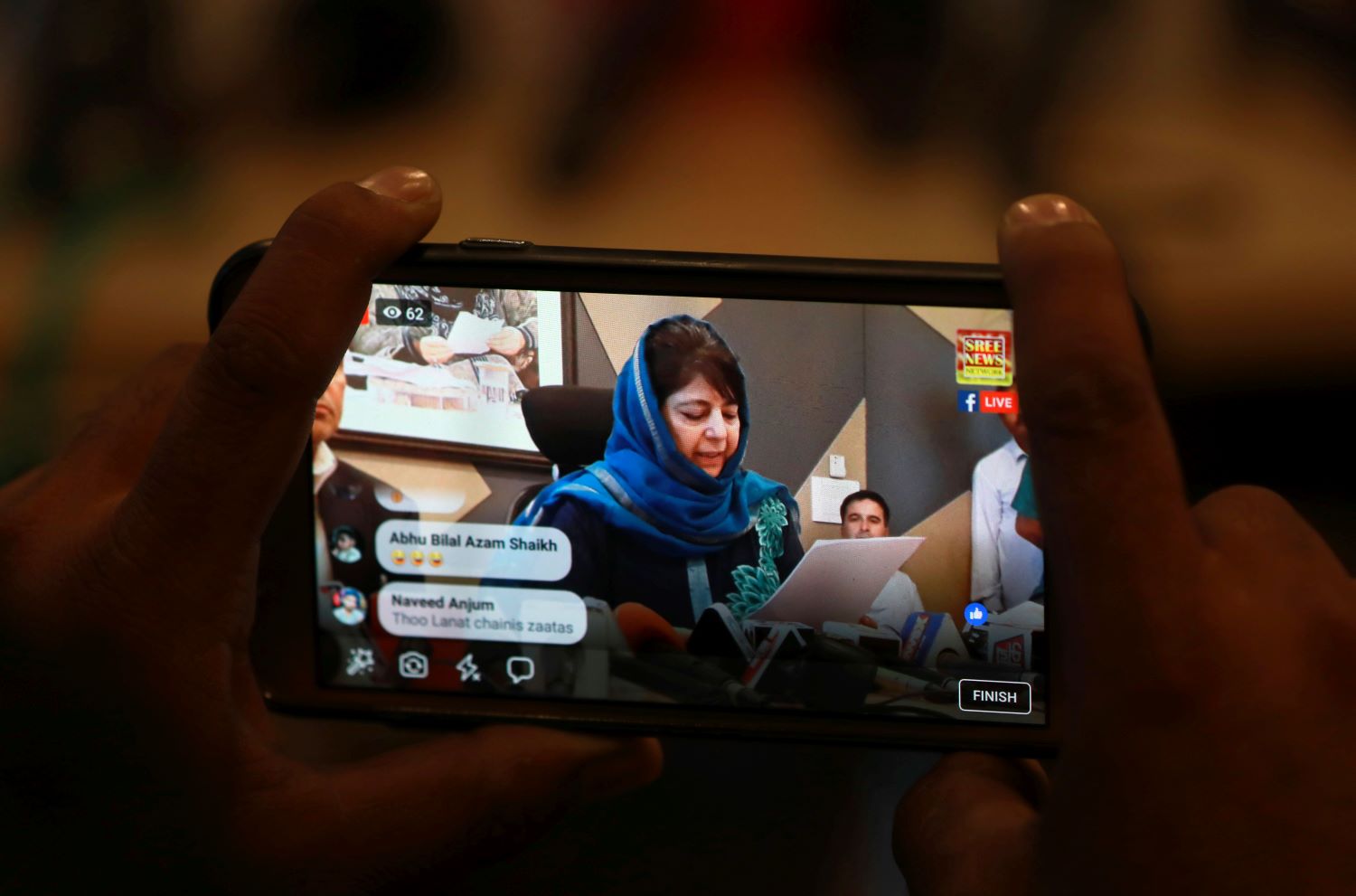How smartphones are changing the face of news journalism
2022-04-13 11:17

(BEIJING, CHINA: A journalist uses a smartphone to film a bilateral meeting between Chinese President Xi Jinping and Colombia's President Ivan Duque, third from right, during a bilateral meeting at the Great Hall of the People on July 31, 2019 in Beijing, China. [Andy Wong - Pool/Getty Image)
The telegraph transformed the way that newspapers could report the news more than 100 years ago. Now, smartphones are doing the same for TV news organisations
Once upon a time, journalists could hold on to a breaking story for up to 24 hours before publishing it when newspapers were the main medium for delivering news. That sounds like a fairytale now.
These days, journalism has transformed into something more akin to Formula 1 racing. As audiences are provided with faster and faster ways to get news, and also to follow the news via live coverage, the speed of news delivery has become the priority for contemporary news journalists. If you aren’t reporting the news as it happens, your audience will simply switch to a rival outlet.
While journalists have accepted this challenge, news gathering techniques have become a matter of concern. For instance, people would generally tune into broadcast media to watch live news in the event of a disaster. Even a few years ago, the first choice for many audiences was television.
This is no longer the case because television cannot broadcast all the news at once. Television is a visual medium. Therefore, TV stations must broadcast either fresh footage or file footage as well as the raw information when they deliver the news. Gathering this footage is a time-consuming exercise - involving the transportation of specialised cameras and equipment to the right location - even when TV journalists happen to be in the right place at the right time.
In cities like Dhaka, where I have worked, TV crews face all sorts of obstacles when it comes to logistics - not least the terrible traffic.
Meanwhile, internet-based news media, which do not rely on visuals as much, have already broken the story - and audiences have moved the story on by sharing and liking links and starting a dialogue in real time about the story.

Young people have ‘almost entirely’ abandoned TV news
It is not surprising, then, that audiences - particularly younger ones - are abandoning TV news. According to Ofcom, the UK’s communications regulator, younger generations in the UK have almost completely left television news behind, choosing instead to get their news on social media from various news outlets, their friends and families instead. While over-65s still watch an average of 33 minutes of news per day on TV in the UK, Ofcom found, those aged 16-24 average just two minutes per day.
So what is the next step for TV news journalism if it wants to stay in the game? Enter the Mobile Journalist (MoJo).
If faster news is what news organisations need to be providing to their viewers, smartphones may well be the answer. This should come as no big surprise. From the telegraph to the smartphone, mass media has always been shaped by technological innovation.
The telegraph was the first electronic telecommunication technology, invented in 1844 and adopted by newspaper agencies for news gathering and reporting.
In the beginning, readers depended solely on newspapers to get news until radio was invented in 1920. Then radio became more popular than newspapers. People’s habit of getting news changed again when television appeared. The rapid diffusion of television took place in the United States in the 1950s when television was widely accepted, and people became interested more in watching television than listening to news on radio.
The innovation of the smartphone has again triggered a massive shift in the way news is both delivered and received.
People no longer need to find the news; now the news finds them via push notifications on their smartphones.

A practical solution
We need to remember why television news overtook newspapers in terms of popularity among audiences. Television has a more immediate effect that newspapers can’t provide - a visual one. The smartphone is simply the latest technological device that enables journalists to deliver news immediately, complete with the multimedia that audiences crave, from wherever they are.
Journalists can use smartphones to capture video easily with just a few taps on their smartphone while remaining close to the site of an event. They can prepare and deliver news scripts using shared internet folders from remote places.
Using smartphones as a news gathering tool is already in practice, but in a limited way. This practice has already been adopted around the world for live reporting during many historical crises such as the Arab Spring and the looting, arson and rioting in England in 2011, and the tsunami in Southeast Asia in 2004.
The use of smartphones for filming news stories has grown as a direct result of the COVID-19 pandemic.
After losing his cameraman to a COVID infection at the start of the Russian invasion of Ukraine, Al Jazeera English senior correspondent Charles Stratford filmed all his reports from Ukraine on his mobile phone, for instance. Similarly, when she was parted from her camera crew during the pandemic lockdowns in 2020 and 2021, fellow Al Jazeera English senior correspondent Natasha Ghoneim also started sending in her reports filmed on a mobile phone.

The end of the newsroom as we know it?
But what does this mean for newsrooms? If more and more journalists become mobile reporters, will there even be a need for a central newsroom location in the future? There is a convincing argument that journalists can work entirely from the field using email, remote electronic access to databases and that multimedia content and news can be anchored completely in cyberspace. More interestingly, all these activities can be done using just a palm-sized smartphone.
It is perfectly possible to operate a newsroom from a laptop. Laptops can also be more convenient than smartphones when it comes to typing news-script, editing video, organising programme rundowns, ordering headlines, and delivering bulletins and content.
Smartphones maintain the edge, however, for effective news gathering which is closely linked to a reporter’s readiness to do the job, and to meet the demand of delivering news immediately.
The smartphone is such a tiny and handy device that users carry it almost all the time. When you sleep, the phone remains beside your pillow; when you go for a walk, the phone is in your pocket; many people even admit to taking it with them to the toilet.
When a smartphone equips a journalist with almost all the tools for news gathering then the urgency of using a smartphone for a journalist becomes clear. Let us consider the traditional way of covering news.
First, you are assigned to cover an event all of a sudden, so you go to the newsroom to pick up your cameraman, arrange a vehicle and driver, and go to the spot. You will need to spend at least half an hour to complete all the formalities for these, such as signing and checking with your kit manager.
When you are covering a large event, spending half an hour in these clerical formalities is a very big deal.
A reporter can save this half an hour simply by using their smartphone to cover the event instead. More interestingly, when reporters choose to work with a smartphone, they become both the reporter and videographer. It is even possible to complete the video editing on your own smartphone if necessary. For example, the iPhone has an app called “iMovie” which will enable a reporter to edit high quality video.

From virtual newsrooms to virtual TV channels?
Smartphones can also be used for news gathering purposes including recording audio interviews for print and online media. And it is not only the journalists in the field who can benefit from using a smartphone. Editors back at the main print or online media desk can also easily use smartphones for editing scripts and updating the website while they are on the go or not at their desks.
As I have already touched upon, during the pandemic, smartphones have come into their own for news and entertainment delivery. Many local and international media run talk shows and interview panels using apps like Zoom and StreamYard with participants frequently taking part via their smartphones.
The combination of smartphones and those apps has allowed journalists to run virtual newsrooms without having any major issues. Taking this to the logical conclusion, it should not be impossible to run an entire news channel via smartphones.
So why are more journalists still not using their smartphones for work?
Smartphones are not without drawbacks when it comes to news gathering and reporting, of course.
First, for the smartphone novice, the process can be somewhat complicated: it is a very creative and skilled job. Not every journalist will be able to deliver news via their smartphone to a technically professional standard.
Second, the video quality of smartphones can be poor, particularly without the specialist equipment that many mobile journalists use with them. If you are caught on the hop with a last-minute, breaking news situation and you don’t have a tripod or microphone to hand, you won’t be able to produce high-quality video and audio.
Third, not every journalist is able to afford a high-quality smartphone, especially in global south countries. Therefore, journalists may not be using technologically high-end smartphone unless their office provides them.

Next, there are technical and software-related issues which may create problems for some broadcast media to synchronise with some smartphones.
Last but not the least, immediacy is the main benefit of using a smartphone as a news gathering tool. But this is not going to be fully exploited until we stop practising city-centric journalism.
For instance, if a disaster happens in Yorkshire and a journalist is deployed from London, it could still take them several hours to reach the location. Journalists need to be positioned in every key location so that they can reach news sites immediately within their coverage area. Some international media have already identified this problem. For example, in March 2021, the BBC announced that it would move key jobs and programmes out of London to get closer to its audiences.
Democratising journalism
If smartphones make more headway into the business of reporting news, we could see a form of democratisation of the news media.
It is an expensive business to operate news outlets which, individually, journalists can’t afford. Eventually, the ownership of media houses always goes to big corporate entities or governments which may have their own agendas which are not always compatible with the principles of journalism.
Hence, journalism can lose its values, ethics and authenticity. The use of smartphones for news gathering and transmission, therefore, could eventually allow any journalist to set up their own news outlet at a minimum cost. In the same way that technology has freed retailers from syndicates in order to market their products independently, smartphones could well free journalism from corporates and governments in the same way.
by Rokeya Lita-AJR









